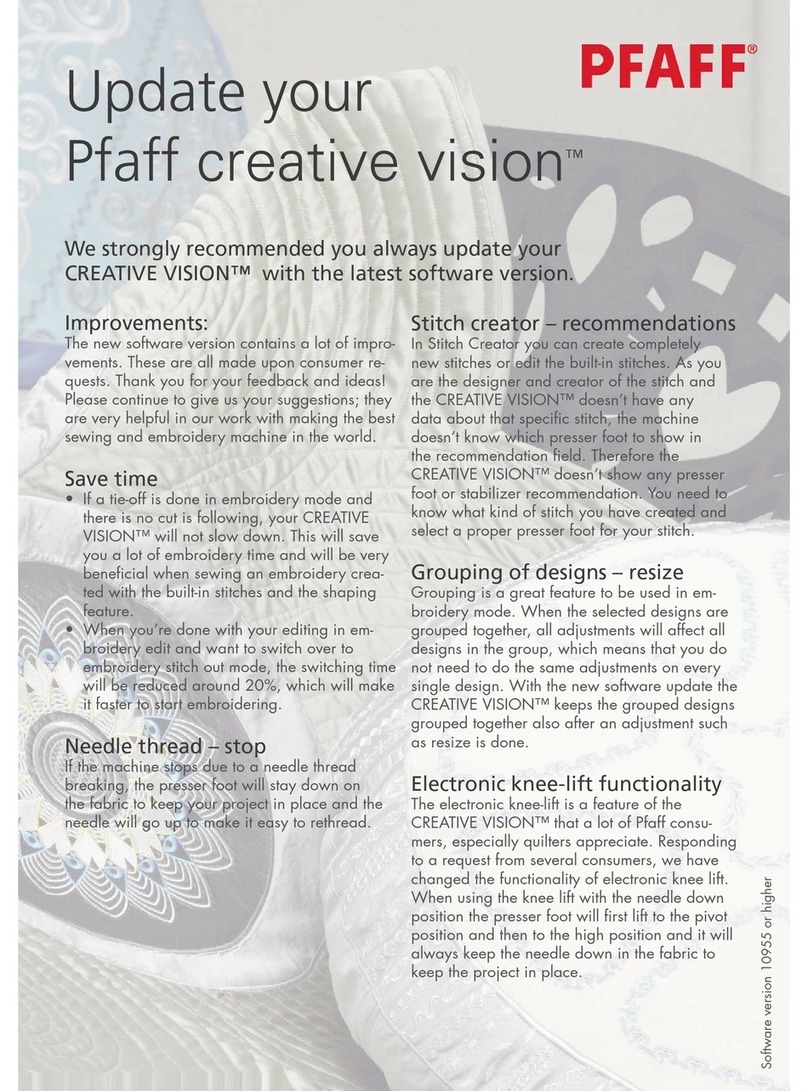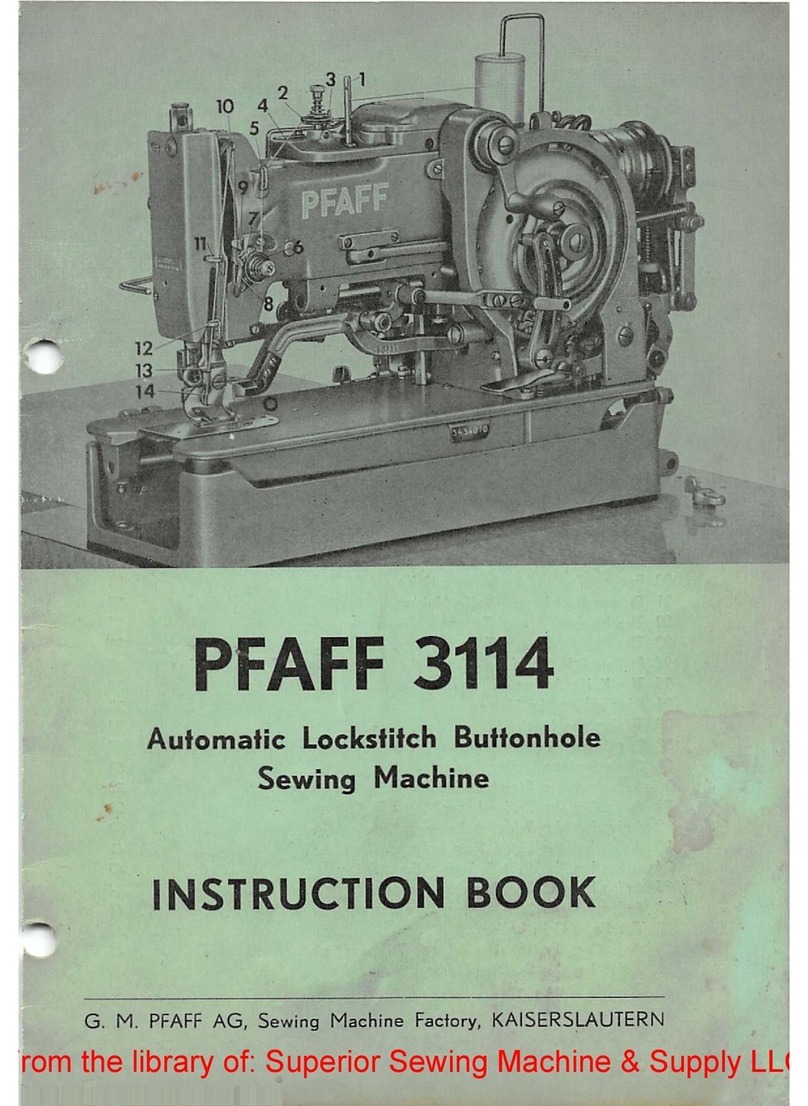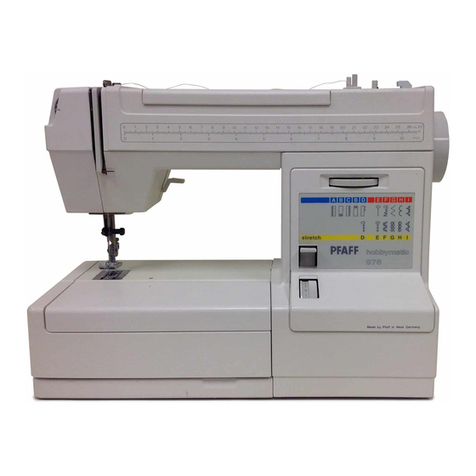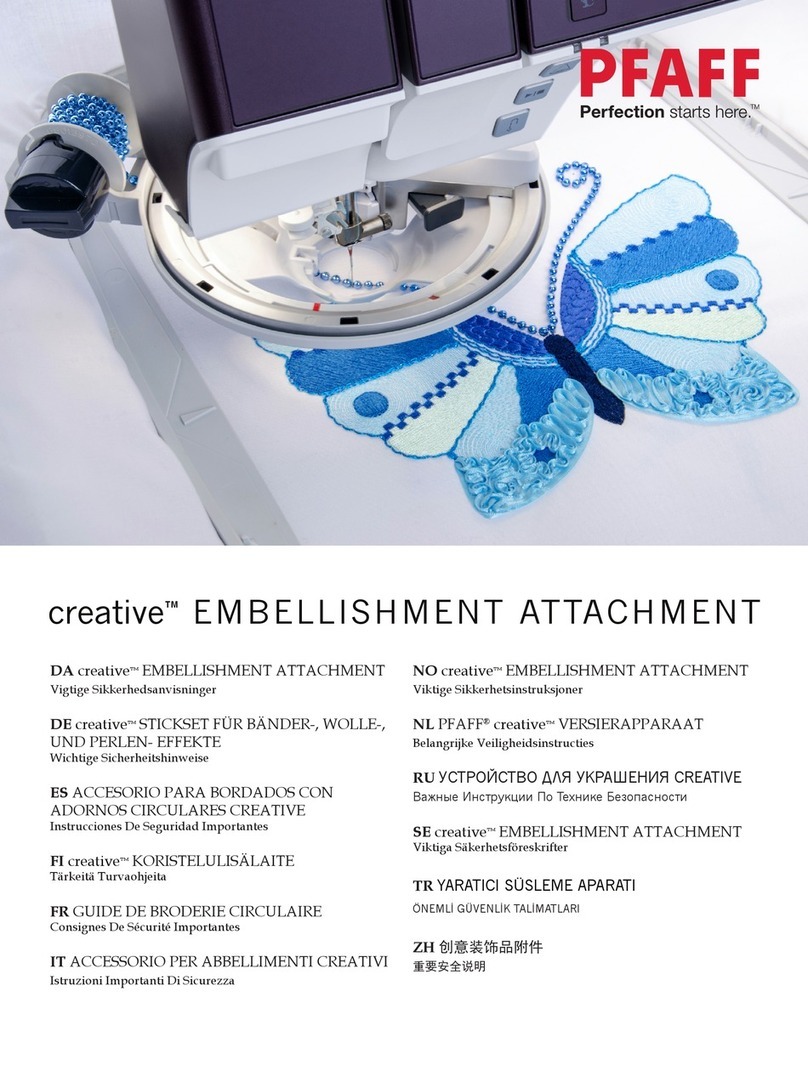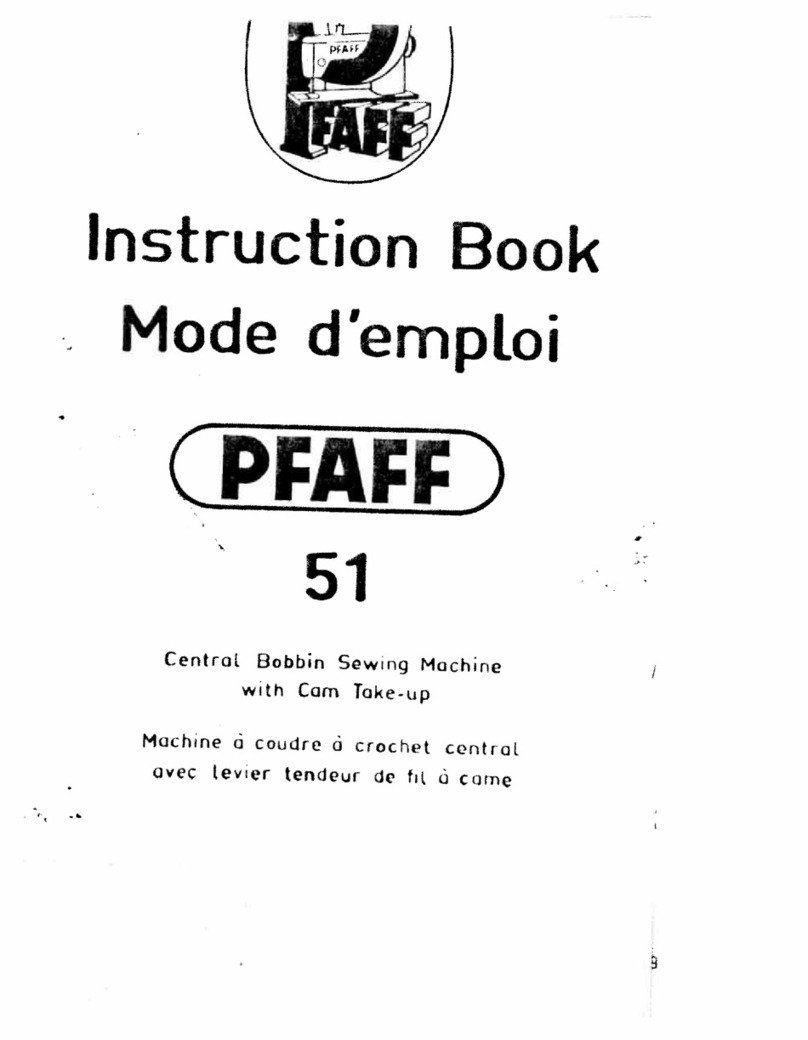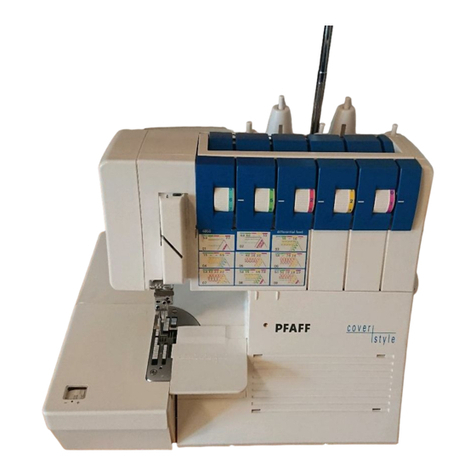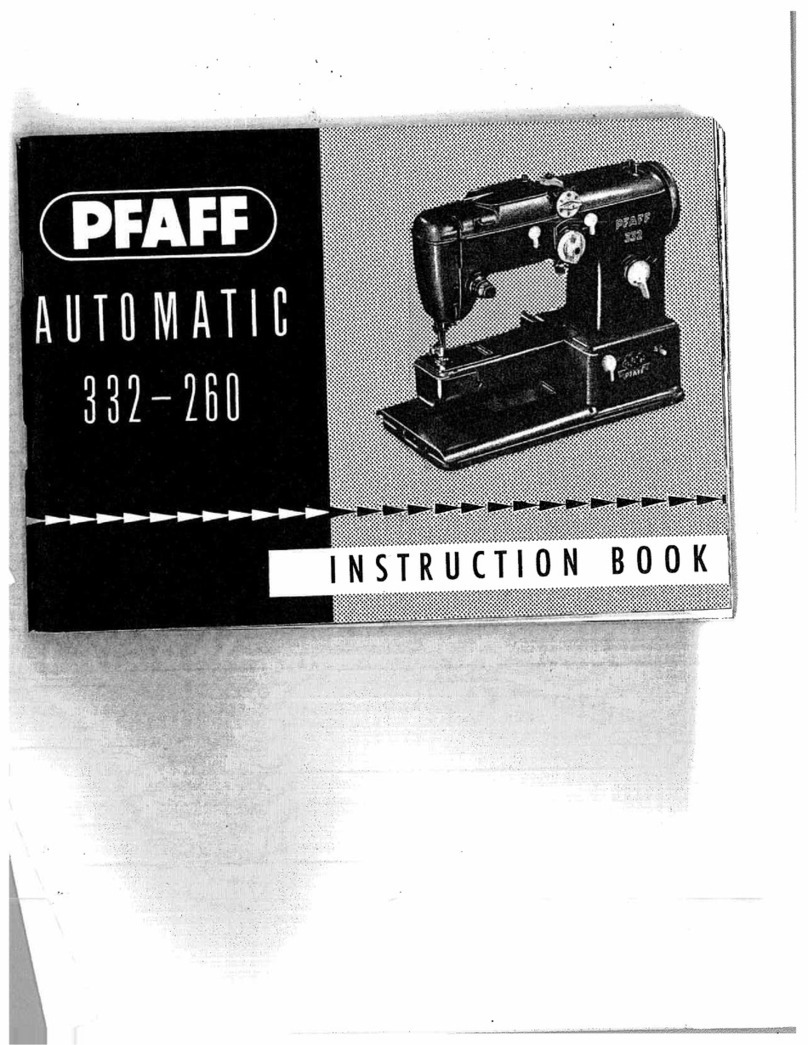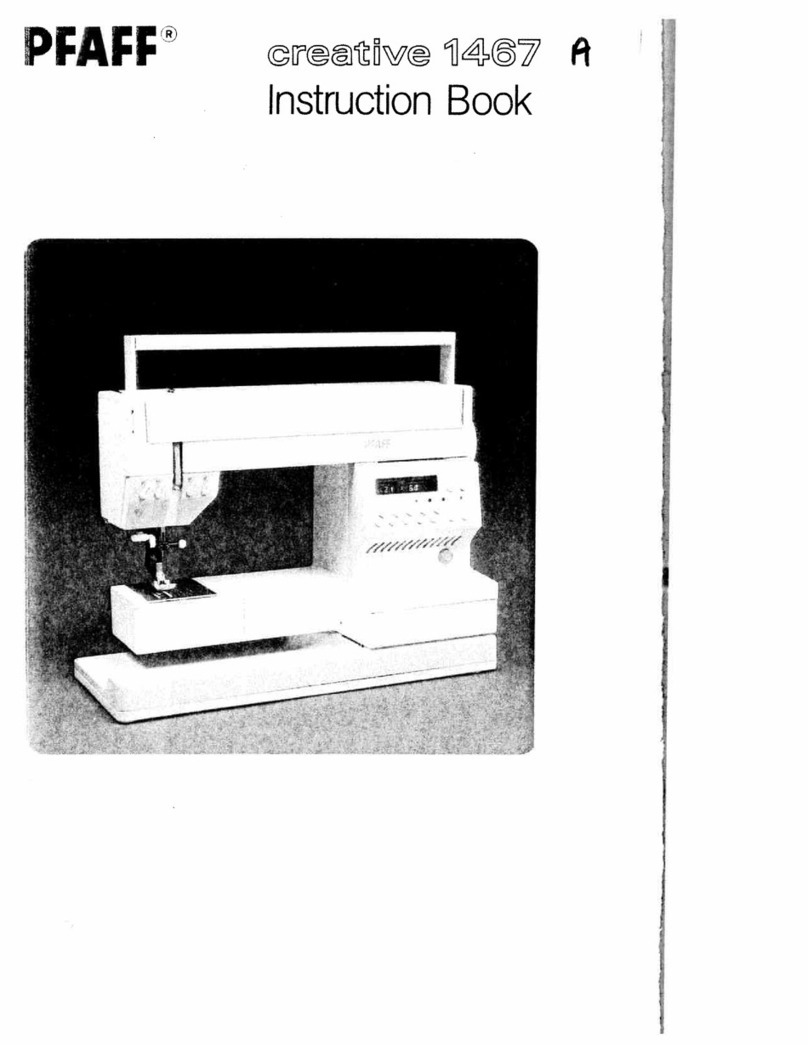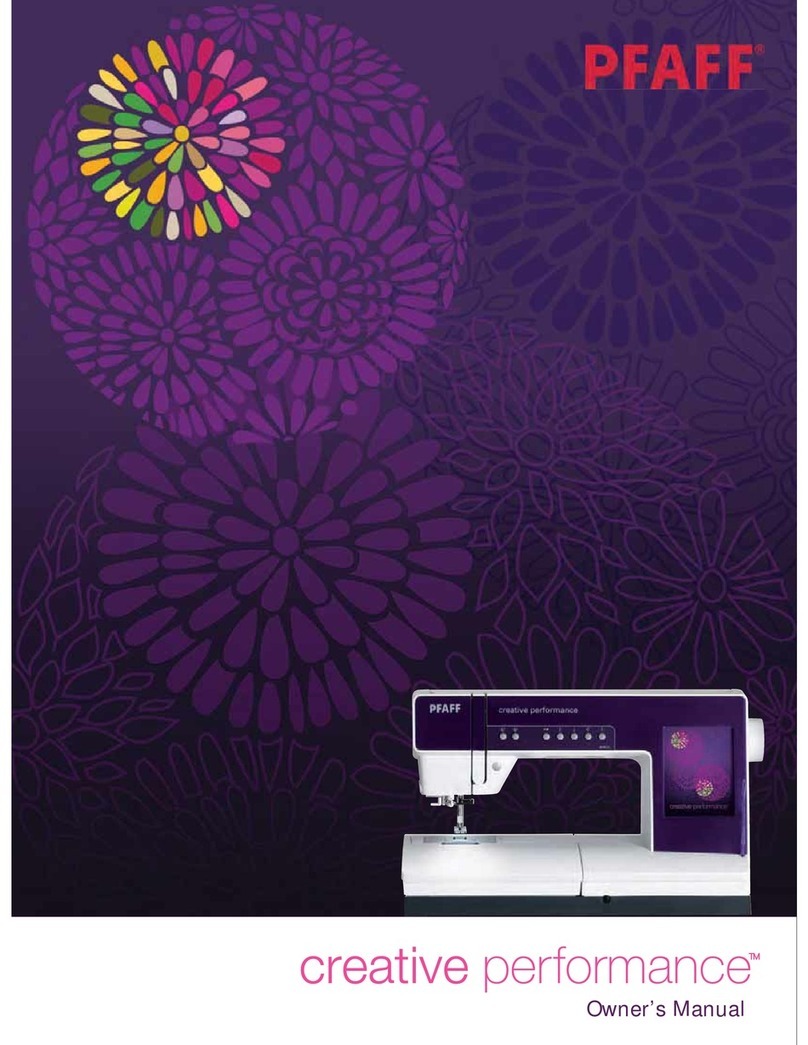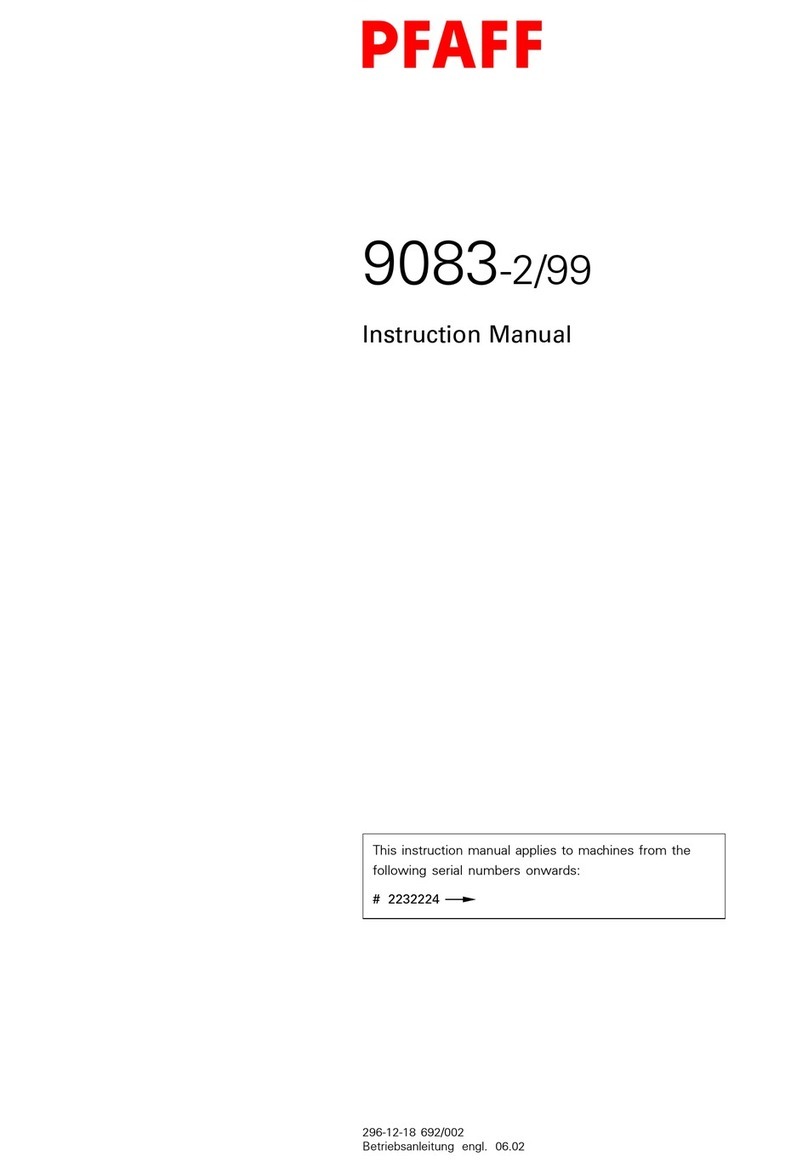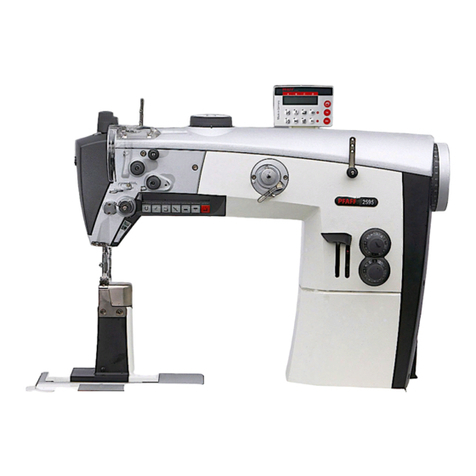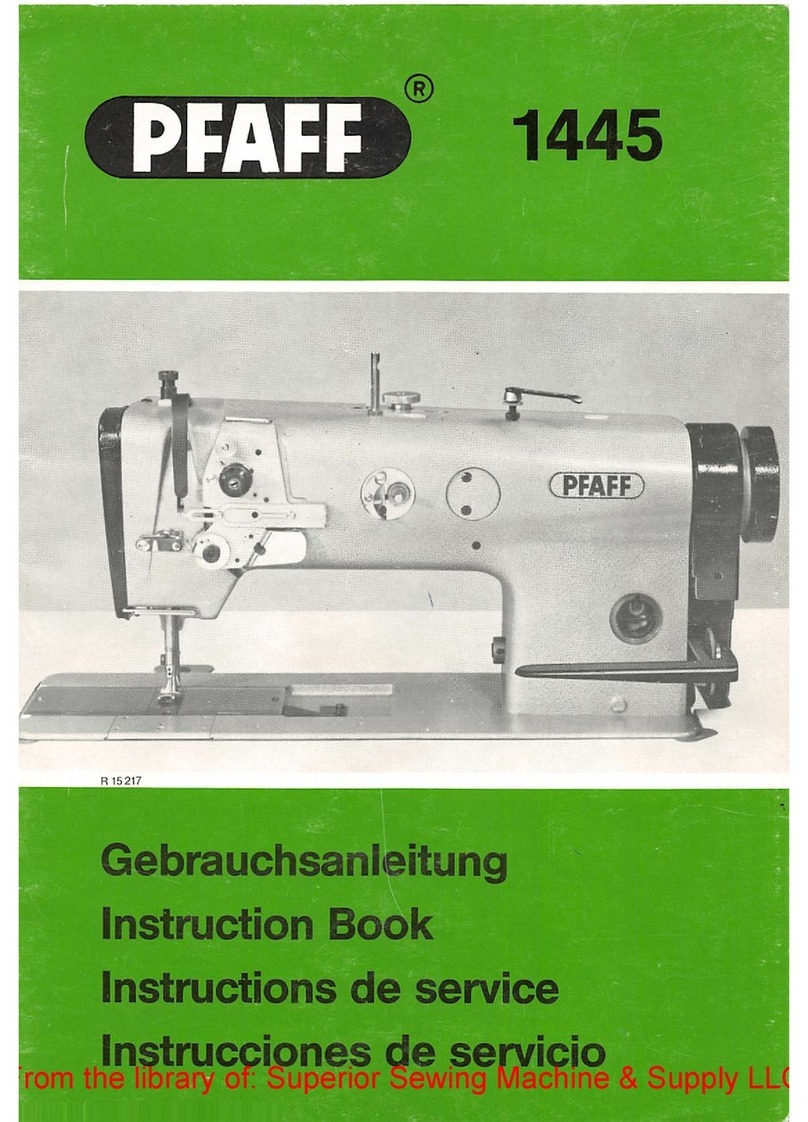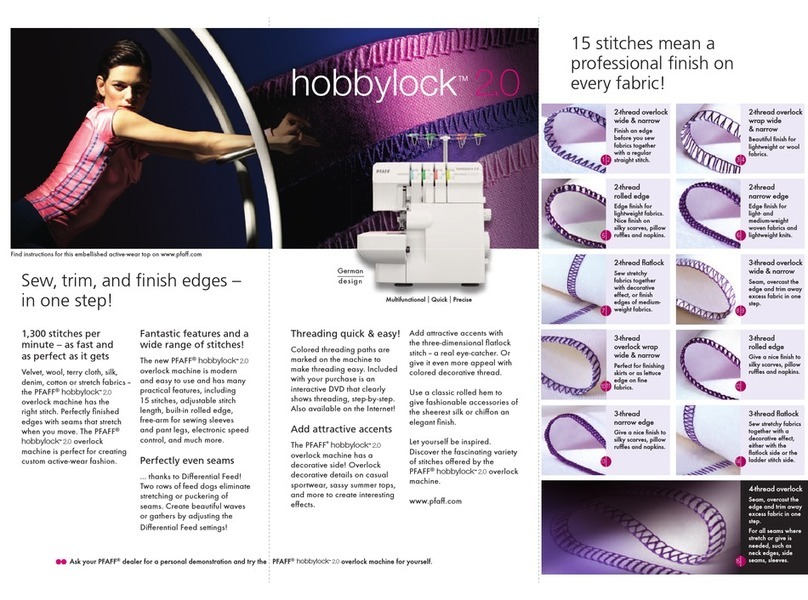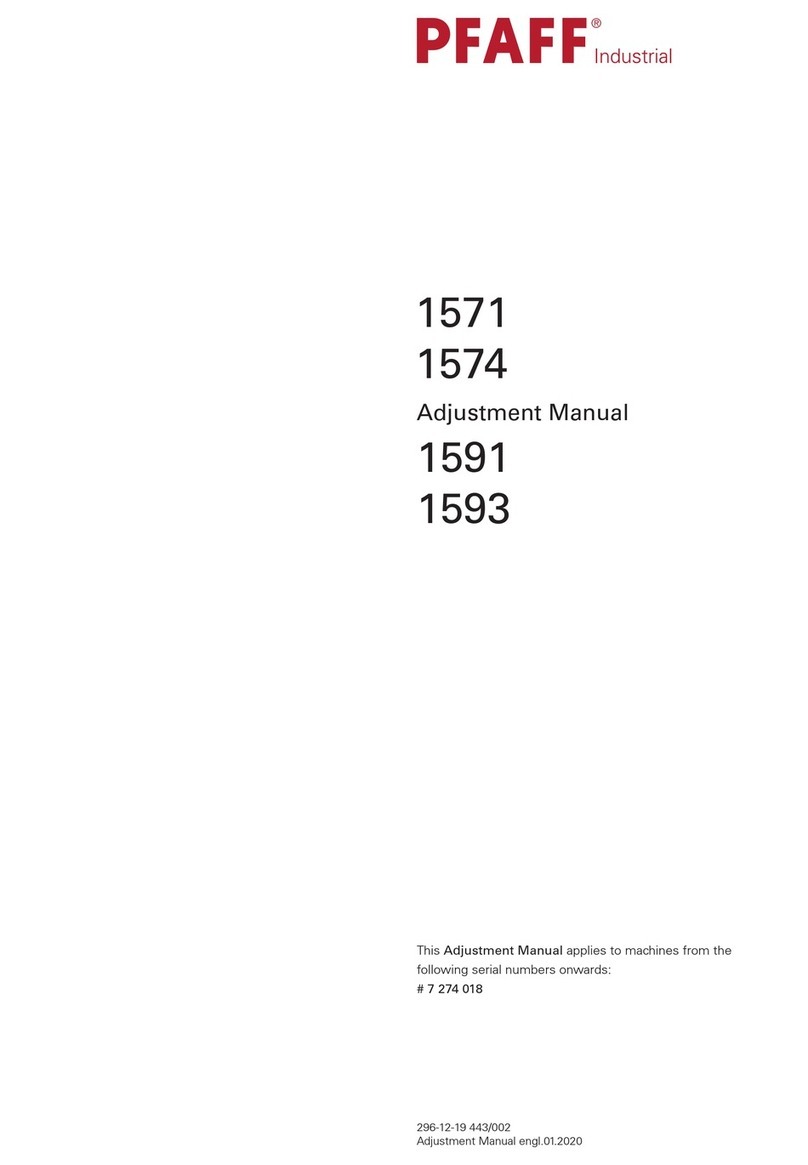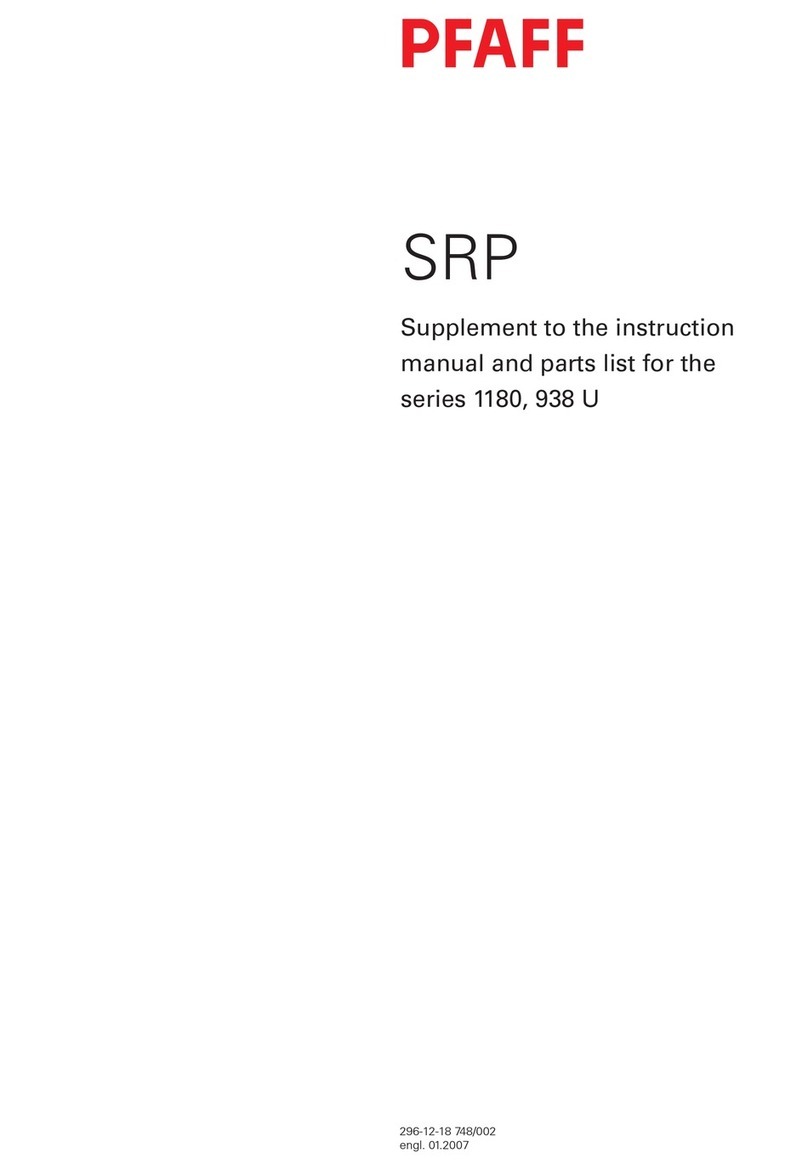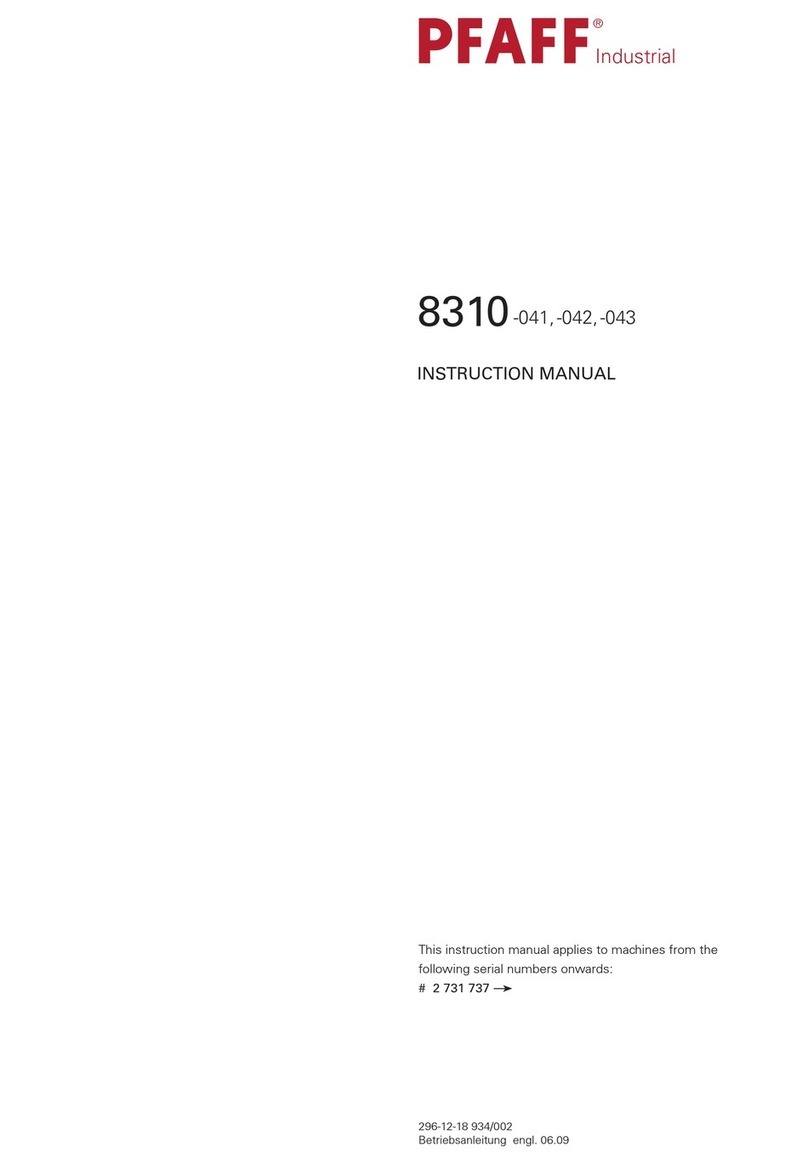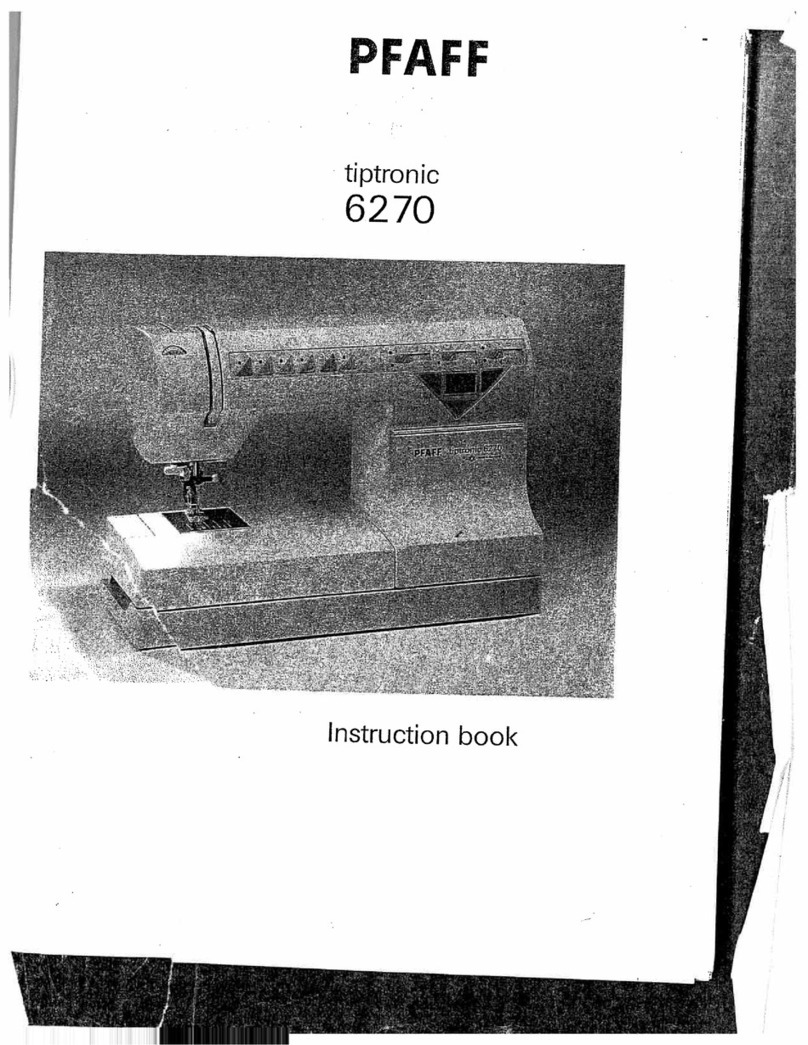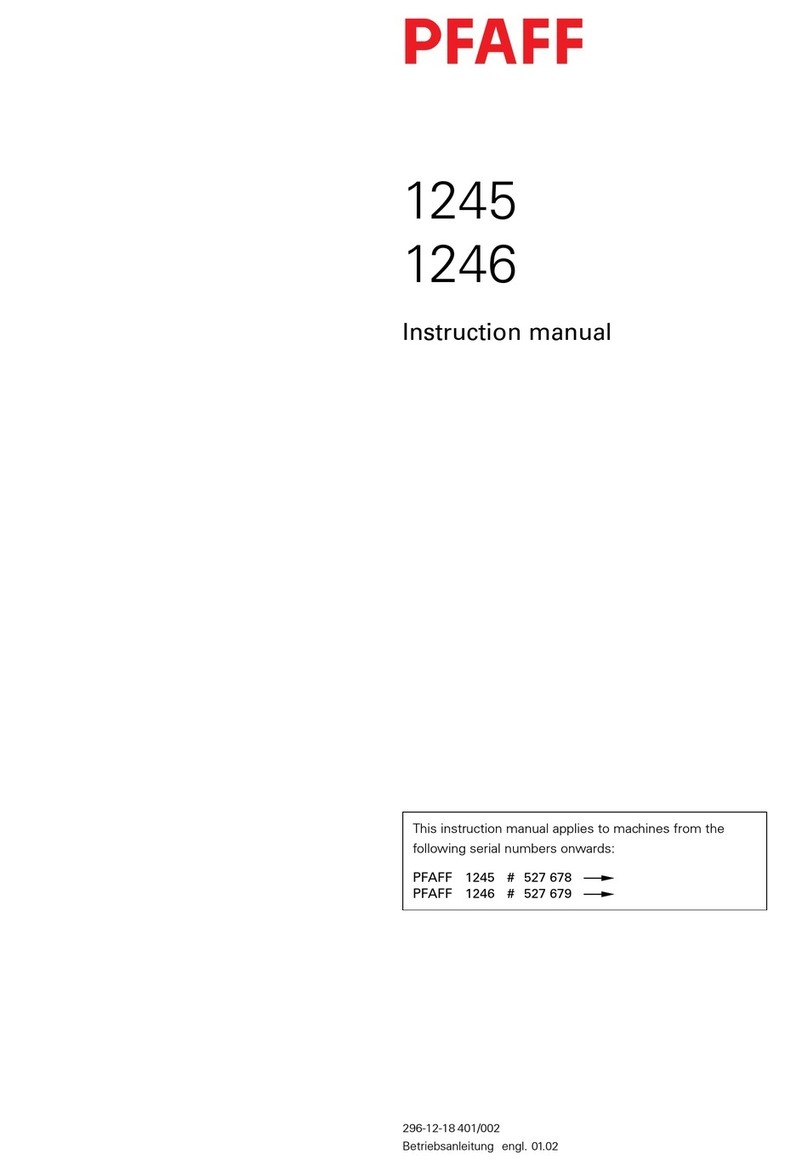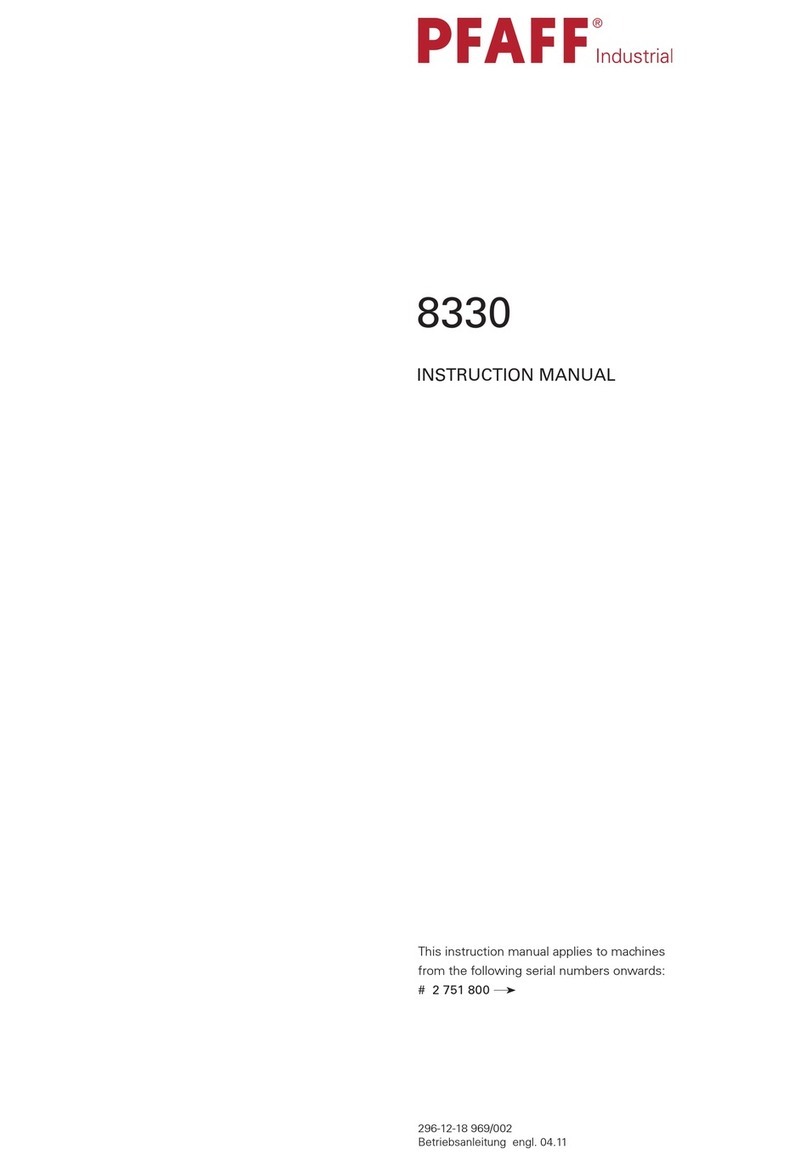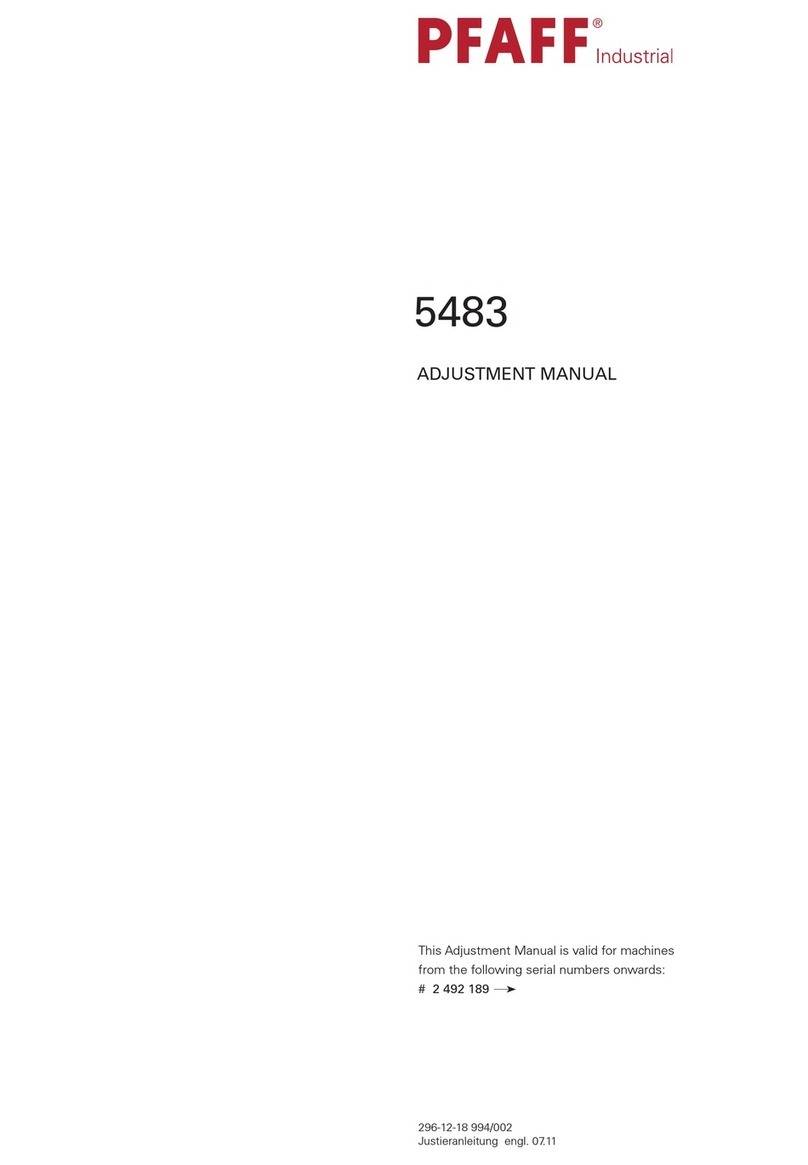Contents
Contents ................................................................................. Chapter – Page
8.05 Commissioning ............................................................................................................. 8 - 5
8.06 Switching the machine on/off ........................................................................................ 8 - 5
8.07 Basic setting of the machine drive unit .......................................................................... 8 - 6
8.08 Mounting/connecting the start inhibitor .......................................................................... 8 - 8
9Setting up..................................................................................................................... 9- 1
9.01 Inserting the needle ....................................................................................................... 9 -1
9.02 Winding the bobbin thread; adjusting the primary thread tension ................................... 9 - 2
9.03 Removing/inserting the bobbin case .............................................................................. 9 - 3
9.04 Threading the bobbin case, adjusting the thread tension ................................................ 9 - 3
9.04.01 PFAFF 938 without thread trimmer ................................................................................ 9 - 3
9.04.02 PFAFF 938 with thread trimmer ..................................................................................... 9 - 4
9.04.03 PFAFF 918 ..................................................................................................................... 9 - 4
9.05 Threading the needle thread / Adjusting the needle thread tension ................................. 9 - 5
9.06 Setting the zigzag stitch and the stitch position ............................................................. 9 - 6
9.07 Adjusting the stitch length ............................................................................................. 9 - 6
9.08 Adjusting the multi-stitch or the zigzag stitch ................................................................. 9 - 7
9.08.01 Changing from zigzag stitch to multi-stitch .................................................................... 9 - 7
9.08.02 Changing from multi-stitch to zigzag stitch .................................................................... 9 - 7
9.09 Entering the start and end backtacks ............................................................................. 9 - 8
10 Sewing ........................................................................................................................10- 1
10.01 Darning program ...........................................................................................................10 -2
10.02 Counted seam ..............................................................................................................10 -2
10.03 Error messages ............................................................................................................10 -3
11 Care and maintenance ................................................................................................ 11 - 1
11.01 Cleaning ....................................................................................................................... 11 - 1
11.02 Lubricating the hook ..................................................................................................... 11 - 2
11.03 Oiling the zigzag drive ...................................................................................................11 -3
11.04 Cleaning the air filter of the air-filter / lubricator .............................................................11 - 4
11.05 Checking/adjusting the air pressure ..............................................................................11 - 4
12 Adjustment ..................................................................................................................12 - 1
12.01 Notes on adjustment .................................................................................................... 12 - 1
12.02 Tools, gauges and other accessories for adjusting........................................................ 12 - 1
12.03 Abbreviations ................................................................................................................12 - 1
12.04 Check and adjustment aid ............................................................................................12 - 2
12.05 Adjusting the basic machine.........................................................................................12 - 3
12.05.01 Balancing weight ..........................................................................................................12 - 3
12.05.02 Centering the needle in the needle hole (in sewing direction) ........................................ 12 - 4
12.05.03 Parallel guiding of the needle bar ..................................................................................12 - 5
12.05.04 Locking lever ................................................................................................................12 - 6
12.05.05 Zero stitch and zigzag stitch scale ................................................................................12 - 7
12.05.06 Centering the needle in the needle hole (crosswise to sewing direction) .......................12 - 8
